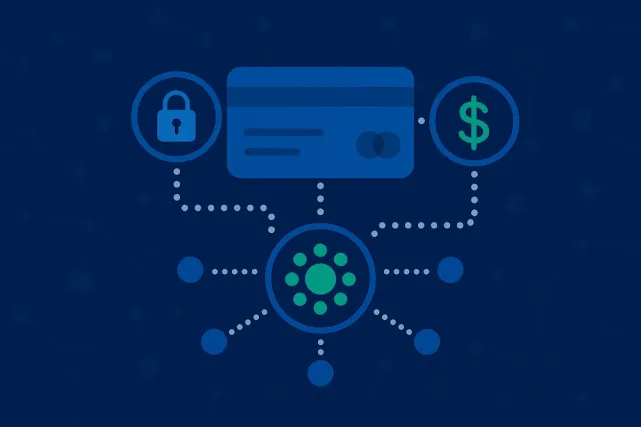Digital payments are now the preferred choice for most consumers.In fact, only 9% of Americans use cash as their everyday, primary payment method. It’s not even an option anymore at half of all U.S. concerts and events, where only digital payments are accepted. What the majority of consumers are using in its place are debit and credit cards, which dominate the transaction landscape.
It’s no surprise that as usage increases, credit card fraud does too. From 2019 to 2023, digital transactions increased by 90% – while suspected digital fraud grew by 105%. That threat is even more concerning for online merchants and sellers, who have experienced a 140% increase in credit card fraud attacks over the past three years.
Fortunately, the evolution of technology is allowing for more robust security solutions. In this post, we’ll explore network tokenization—an innovative approach to payment security that’s reshaping how businesses protect sensitive customer data while improving the overall payment experience.
Network tokenization vs. Traditional Tokenization
What is Traditional Tokenization?
Traditional tokenization is a security process that securely stores the primary account number (PAN) and other sensitive cardholder information and replaces it with a unique identifier, called a token, when a digital transaction takes place.
Tokenization has one very important advantage over encryption, another type of security measure. While tokens are randomly generated characters that hold no intrinsic value, encryption converts data into an unreadable format using algorithms; however, it is possible for that data to be decrypted by sophisticated hackers and stolen.
That said, traditional tokenization has limitations. Typically, the tokens that merchants or payment processors generate are static, and because they’re static, the same token is used over time, which could create some potential security risks. Second, the tokens only protect sensitive card data within a single merchant or transaction context, so they can’t be used across merchants or companies. And third, when cards expire or are stolen, new tokens must be manually generated.
What is Network Tokenization?
Network tokenization varies from traditional tokenization in a few distinct ways.
- Network tokens are issued by card networks (like Visa or Mastercard) vs. merchants or payment processors
- Network tokens are automatically refreshed in the case of lost, stolen, or expired cards
- Network tokens change after each use, dramatically reducing fraud risks
- A single network token can be used across multiple merchants.
Benefits of Network Tokenization
Increased Security
When compared to traditional online card transactions with PANs, token-based transactions reduce fraud by 30%. In the event of a security breach, tokenization reduces the scope of that breach by 60%.
Network tokens, specifically, offer even more security. When tokens are generated dynamically, or created anew for each transaction, they provide 20% more security than static encryption.
Reduced Declines
Payment declines can be devastating to businesses. Consider this example: if a subscription service experiences even a 1% failure rate due to outdated card information, it could lead to significant monthly losses – up to $100,000 for a company with 1 million subscribers.
The stakes are even higher when you consider consumer behavior. Research shows that 35% of cardholders abandon a merchant completely after experiencing a card decline. Network tokenization helps prevent both of these scenarios by ensuring payment information remains current, and is responsible for increasing approval rates by nearly 5%.
Cost Savings and Avoidance
Implementing network tokenization delivers a slew of financial benefits. First, it greatly reduces fraud costs – fewer fraudulent transactions mean fewer chargebacks and associated fees. It can even help to lower interchange rates. Visa’s network token can reduce interchange rates by up to 10 basis points compared to non-tokenized rates.
Improved Checkout and User Experience
All consumers expect fast, seamless transactions. Network tokenization delivers this by eliminating friction points in the payment process. With network tokens, there’s no need to update payment methods or verify cards with CVV/CVC codes. This streamlined experience leads to higher customer satisfaction and increased conversion rates.
Streamlined Recurring Payments
For SaaS businesses and subscription-based models, network tokenization offers significant advantages when it comes to processing recurring payments. By automatically updating card information when it changes, businesses gain recurring billing stability and card lifecycle continuity.
This means fewer interrupted subscriptions, reduced customer service inquiries about failed payments, and more predictable revenue streams.
Reduced PCI Burden
Because network tokens hold no intrinsic value, they enable businesses to reduce their PCI DSS compliance scope, effectively lowering both the costs and the security risks. According to one report, 90% of financial institutions consider tokenization a key strategy for compliance.
Implementing Network Tokenization
Implementing network tokenization begins with choosing the right payment platform. Some solutions, like ARISE, come seamlessly integrated with network tokenization capabilities. In the case of ARISE, this can be achieved with minimal disruption. Adoption requires no development work, hardware updates, or operational downtime.
For merchants and SaaS companies concerned about payment security, customer experience, and operational efficiency, network tokenization is quickly becoming an essential component of a comprehensive payment strategy.
Learn more about adopting network tokenization through our ARISE platform by reaching out to our team today.
